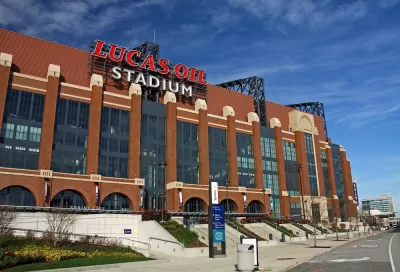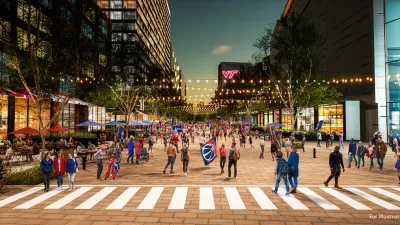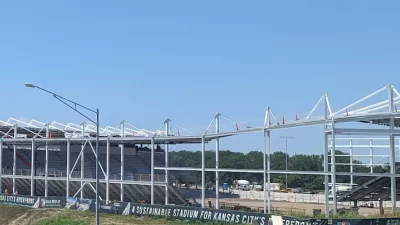Are you ready for some football…stadiums to receive massive subsidies from the federal government?

Ted Gayer, Austin J. Drukker, and Alexander K. Gold write a blog post introducing a new paper on the federal subsidies devoted to private sports stadiums in the United States.
The article opens with the example set by the house that replaced the "House that Ruth Built": the new Yankee Stadium that opened in 2009. The stadium received $1.7 billion in tax-exempt municipal bonds, which amounts to a $431 million federal subsidy. The stadium's financing is also responsible for another $61 million in lost federal tax revenues: "High-income taxpayers holding the bonds receive a windfall tax break, resulting in an even greater loss of revenue to the federal government."
The new paper by the Brookings team finds 35 examples of tax-exempt bond financing of professional sports stadiums since 2000.
All together, the federal government has subsidized newly constructed or majorly renovated professional sports stadiums to the tune of $3.2 billion federal taxpayer dollars since 2000. But because high-income bond holders receive a windfall gain for holding municipal bonds, the resulting loss in total revenue to the federal government is even larger at $3.7 billion.
The article also includes an interactive menu of federal financing for stadiums, with stadiums from Major League Baseball, the National Football league, the National Basketball Association, an the National Hockey league included.
The study also recommends a way to end the subsidy gravy train for private sports stadiums: eliminate the private payment test for stadiums. "By doing so, any stadium used primarily for 'private business use' (that is, all professional sports stadiums) would no longer be eligible to receive federal tax-exempt financing," according to the article.
FULL STORY: Why the federal government should stop spending billions on private sports stadiums

Alabama: Trump Terminates Settlements for Black Communities Harmed By Raw Sewage
Trump deemed the landmark civil rights agreement “illegal DEI and environmental justice policy.”

Study: Maui’s Plan to Convert Vacation Rentals to Long-Term Housing Could Cause Nearly $1 Billion Economic Loss
The plan would reduce visitor accommodation by 25% resulting in 1,900 jobs lost.

Why Should We Subsidize Public Transportation?
Many public transit agencies face financial stress due to rising costs, declining fare revenue, and declining subsidies. Transit advocates must provide a strong business case for increasing public transit funding.

Paris Bike Boom Leads to Steep Drop in Air Pollution
The French city’s air quality has improved dramatically in the past 20 years, coinciding with a growth in cycling.

Why Housing Costs More to Build in California Than in Texas
Hard costs like labor and materials combined with ‘soft’ costs such as permitting make building in the San Francisco Bay Area almost three times as costly as in Texas cities.

San Diego County Sees a Rise in Urban Coyotes
San Diego County experiences a rise in urban coyotes, as sightings become prevalent throughout its urban neighbourhoods and surrounding areas.
Urban Design for Planners 1: Software Tools
This six-course series explores essential urban design concepts using open source software and equips planners with the tools they need to participate fully in the urban design process.
Planning for Universal Design
Learn the tools for implementing Universal Design in planning regulations.
Smith Gee Studio
Alamo Area Metropolitan Planning Organization
City of Santa Clarita
Institute for Housing and Urban Development Studies (IHS)
City of Grandview
Harvard GSD Executive Education
Toledo-Lucas County Plan Commissions
Salt Lake City
NYU Wagner Graduate School of Public Service




























